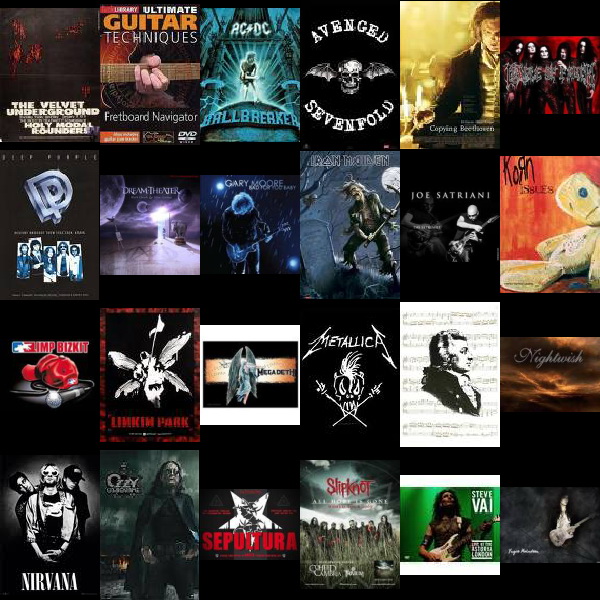What is Blues/Jazz music?

Gpro Tabs
Bad Asteroid Tab by Professor Shred with free online tab player. One accurate version. Recommended by The Wall Street Journal. 👇👇👇👇👇👇(u2) One - Fingerstyle Free Tab Inscreva-se Comente Like 👍👍 Compartilhe Gpro Tabs Quer Aprender Mais sobre FINGERSTYLE? Acesse o link abaixo!h.
Guitar Pro Tabs Download Pack 2020


Guitar Pro Tabs Ultimate
Jazz is a musical genre originating in the southern United States, created in the late 19th and early 20th centuries among African-American communities. With more than a hundred years of existence, from ragtime to contemporary jazz, it covers many subgenres marked by a heritage of European-American and African-American music, and designed to be played in public. It emerges from other musical genres, including ragtime, walking, negro spiritual and blues, and has features such as the frequent use of improvisation, polyrhythm, syncope, shuffle, scat and blue notes. On the way, he borrows many elements from American popular music and the brass band tradition. Commonly associated with the five emblematic instruments of jazz - the saxophone, trumpet, trombone, clarinet and piano - jazz, however, involves a large number of different instruments, including guitar, drums and double bass.
During the 20th century, jazz gained wide popularity beyond the borders of the United States and spread around the world, giving rise to many styles and subgenres depending on the country and region. The first forms of jazz appeared in New Orleans and Saint-Louis in 1910: New Orleans jazz mixed blues on the grid with the biguine of the French West Indies. In the 1930s, swing emerged, a style marked by blues and improvisation, and gypsy jazz, a genre created in France under the influence of big bands and bal musette. From a popular music designed for dance, jazz becomes a complex musical genre with bebop, played at faster tempos and with more elaborate chords. The cool jazz of the late 1940s brings calm, delicate sounds, and long, linear melodies. The free jazz of the 1950s freed itself from harmonic constraints, and highlighted improvisation and energy.
Hard bop appeared in the mid-1950s and introduced influences from rhythm and blues, gospel and blues, particularly in saxophone and piano playing. A few years later, modal jazz uses the scale as the basis for musical structure and improvisation. In the 1960s and 1970s, jazz fusion developed, combining jazz and rock rhythms, electronic instruments and strong amplification on stage. A commercial form of jazz fusion, called smooth jazz, was a great success in the 1980s and reached a wide audience through extensive radio broadcasting. To date, jazz has spawned dozens of subgenres, including Afro-Cuban jazz, West Coast jazz, ska-jazz, avant-garde jazz, indo-jazz (en), soul jazz, chamber jazz, Latin jazz, jazz-funk, loft jazz (en), punk jazz, acid jazz, jazz rap, M-Base (en) and nu jazz.
Jazz musicians (jazzmen) play in formations qualified as jazz bands (jazz orchestras). Software for microsoft office on mac. Bluetooth usb adapter for mac. Generals for mac zero hour. The major jazz figures are pianists Duke Ellington, Art Tatum, Thelonious Monk, Bud Powell, Oscar Peterson, Herbie Hancock and Count Basie, trumpeters Louis Armstrong, Dizzy Gillespie and Miles Davis, double bassist Charles Mingus, saxophonists Coleman Hawkins, Lester Young, Charlie Parker and John Coltrane, clarinetist Sidney Bechet, and singers Billie Holiday, Nina Simone and Ella Fitzgerald. In the soundtrack of many films, jazz has left its mark on the work of filmmakers such as Martin Scorsese and Woody Allen, himself a jazz clarinettist. Since the post-war period, the world capital of jazz has been New York City, thanks to its many jazz clubs (especially on 52nd Street) and its auditoriums, including Carnegie Hall, which hosted legendary concerts. However, jazz festivals have been created all over the world: the main ones are those in Montreux, Montreal and Copenhagen.
The term blues comes from the abbreviation of the English expression blue devils ([blu ˈdɛvəlz] 'devables bleus'), which means 'black ideas'. The term blue, from which the blues is also derived from old French and means 'personal history' (in today's French language, the term bluette remains, which is, for all bluesmen[bluːzmæn], the meaning of the blues, a song in the first person singular).
The blue notes, characteristic of the style and accentuating the lamentation effect, confuse the major and minor modes. Here are the three blue notes that we find in the blues:
the third, which is often minor in a major blues and vice versa. A common process is to move from the minor third to the major third by 'sliding' a semitone towards the treble (bend on the guitar, glissendo on the brass..);
the increased fourth / decreased fifth, which creates a tension and with which
